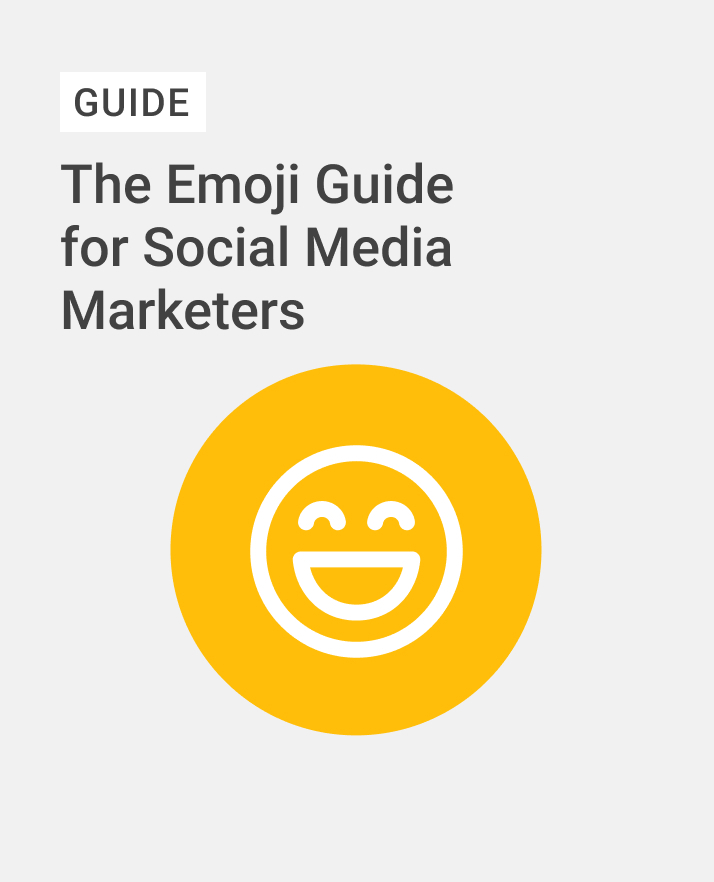Girl Math: What’s Behind the Viral Trend and What Do Marketers Need to Know?
By Michaela VoglApr 18
Unlock the secrets to staying ahead in the ever-evolving world of social media marketing.
Published July 14th 2023
In celebration of World Emoji Day 2023 on 17 July, we looked at the most popular emojis of the year so far and the differences in how they’re used between consumers and brands.
For this post, we tracked and analyzed online emojis use between January 1 - June 30 2023 using Brandwatch Consumer Research.
The use of emojis is growing. Our analysis showed that between January 1 - June 30 2023, emojis received 7.5b mentions, a 30% increase from the previous six-month period.
We looked at the top 10 most used emojis, and how the volume of mentions around them has changed since 2022.
How has the use of these emojis changed in the last six months? We analyzed mentions for the top 10 most used emojis in the first six months of 2023 and compared them to July 1 - December 31 2022.
While all 10 emojis grew by volume of mentions, 🔗, 👇, and 🚨 saw the highest growth, representing an increase of 155%, 154%, and 93% respectively.
We looked at the volume of emoji mentions per country, and with close to 526m mentions, Japan leads the top-five list.
In fact, users in Japan shared 13% more emojis than those located in the second-most popular country on the top-five list, the United States.
We collected online mentions in conversations with “my” and “favorite emoji.”
Even though 😭 has recently been added to the “canceled” emoji list, this emoji landed the #1 spot on our list of favorite emojis.
Last year (between July 1 - December 31 2022), the loudly crying face emoji placed second after 🤭, the face with hand over mouth, followed by 😂, the face with tears of joy.
Despite being recently deemed as uncool by Gen Z, who declared that those using the laugh-cry emoji (😂) are “out of touch,” this emoji made it to the #4 spot on our list.
A recent article in the New York Post went out under the headline, “Gen Z canceled the ‘hostile’ thumbs-up emoji.” A Daily Mail post shared this sentiment by adding that the thumbs-up emoji makes users look old.
Our top five favorite emojis chart resonates with both articles, showing very negative sentiment associated with the thumbs-up emoji (👍).
We tracked sentiment around the thumbs-up emoji (👍) in online conversations in the first half of 2023 compared to the previous six-month period.
Looking at the graph, while the volume of neutral and positive mentions relating to 👍 is significantly higher, the volume of negative mentions increased by 88% during the six-month period studied compared to the previous period.
We looked at the demographic data, and there are some differences in how men and women use emojis.
When looking at the author gender split, 42% of women used emojis in their tweets in the first half of 2023 compared to 58% of men.
We also analyzed the sentiment in emoji-related conversations among women and men.
Brandwatch data shows that men posted higher volumes of negative mentions involving emojis compared to women, with 22% of all sentiment-categorized mentions being negative.
Using Social Panels, we dove into the data to understand emoji use across generations, and it’s mixed.
It’s important to note that different emojis may carry a different meaning among each generation and target your messaging accordingly.
Using Consumer Research, we examined Twitter accounts of individuals and organizations that have a following of over 100k.
How do organizations and businesses use emojis compared to individual users?
🔥 (fire emoji): With 80k mentions, this emoji has topped the list as the most used emoji by brands and organizations so far this year. Coming in close behind was 👉(white right pointing backhand index emoji).
✨(sparkles): With close to 131m mentions, this emoji landed the #1 spot among consumers on social media.
Looking at the chart, it’s clear that brands and individual users use emojis differently. For brands looking to connect with their audience online, they must consider cultural differences while ideating social media campaigns and measuring their success.
Emojis are an important part of communicating with your audience. To learn more about incorporating emojis appropriately and avoiding pitfalls, check out our practical guide to emojis for social media managers.
Offering up analysis and data on everything from the events of the day to the latest consumer trends. Subscribe to keep your finger on the world’s pulse.
Why do you need emojis? How can you incorporate them in marketing? Read on for emoji marketing tips..

Existing customer?Log in to access your existing Falcon products and data via the login menu on the top right of the page.New customer?You'll find the former Falcon products under 'Social Media Management' if you go to 'Our Suite' in the navigation.
Brandwatch acquired Paladin in March 2022. It's now called Influence, which is part of Brandwatch's Social Media Management solution.Want to access your Paladin account?Use the login menu at the top right corner.